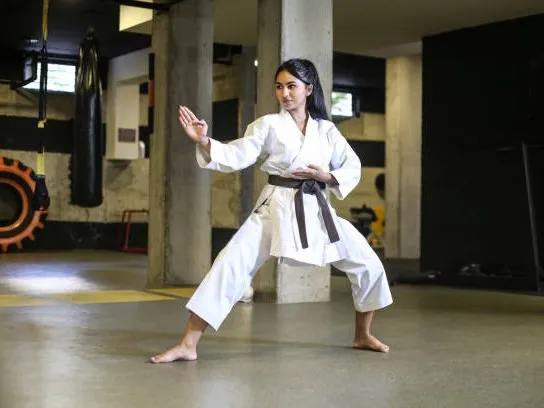Karate, a martial art originating from Japan, has captivated practitioners worldwide with its powerful techniques and profound philosophy. This guide will take you through the essence of karate, its various schools, and help you embark on your own karate journey.
What is Karate?
Karate, meaning "empty hand" in Japanese, is a martial art that focuses on striking techniques such as punching, kicking, and knee strikes. It originated in Okinawa and later spread throughout Japan and the world.
Benefits of Practicing Karate
- Physical fitness and strength
- Mental discipline and focus
- Self-defense skills
- Stress relief
- Improved self-confidence
The goal of this guide is to help you discover the different facets of karate and find the style that suits you best.
Part 1: The Fundamentals of Karate
Basic Techniques
- Strikes: punches, kicks
- Blocks and evasions
- Katas: codified forms
Fundamental Principles
- Posture and balance
- Breathing and ki (internal energy) control
- Coordination and precision
Values of Karate
- Respect and discipline
- Perseverance and self-improvement
- Humility and self-control
Part 2: Different Schools and Styles of Karate
Karate has evolved into various schools and styles, each with its unique characteristics and approach. Let's explore some of the major styles:
Shotokan
- Founder: Gichin Funakoshi
- Characteristics: Powerful techniques, low stances, precise katas
- Philosophy: Emphasis on character development
Goju-Ryu
- Founder: Chojun Miyagi
- Characteristics: Combination of hard and soft techniques, importance of breathing
- Philosophy: Balance between strength and flexibility
Wado-Ryu
- Founder: Hironori Otsuka
- Characteristics: Fluid movements, evasions, influence from jujutsu
- Philosophy: Harmony and peace
Shito-Ryu
- Founder: Kenwa Mabuni
- Characteristics: Wide variety of katas, fast techniques
- Philosophy: Preservation of traditional techniques
For a comprehensive list of karate styles, visit our karate styles page.
Part 3: Choosing Your Karate Style
What Are Your Goals?
- Self-defense
- Competition
- Health and well-being
- Personal development
Which Style Suits You?
Consider your personal preferences, physical attributes, and aptitudes when choosing a style. It's often beneficial to observe or try classes from different styles before making a decision.
| Style | Focus | Physical Demand | Competition Emphasis |
|---|---|---|---|
| Shotokan | Power | High | High |
| Goju-Ryu | Balance | Medium | Medium |
| Wado-Ryu | Fluidity | Medium | Medium |
| Shito-Ryu | Variety | High | High |
Part 4: Getting Started in Karate
Finding a Club
To find a karate club near you, use our club search tool. Consider factors such as:
- The instructor's experience and qualifications
- The atmosphere of the dojo
- Class schedules and fees
What to Expect in Your First Class
- Warm-up exercises
- Basic technique practice
- Introduction to etiquette and dojo rules
Necessary Equipment
- Gi (karate uniform)
- Belt
- Optional protective gear (for sparring)
Conclusion
Karate is a comprehensive and fascinating martial art that offers benefits for body, mind, and spirit. Whether you're interested in self-defense, competition, or personal growth, karate has something to offer everyone.
We encourage you to take the first step on your karate journey. Remember, the path of karate is one of continuous learning and self-improvement.
"The ultimate aim of karate lies not in victory or defeat, but in the perfection of the character of its participants." - Gichin Funakoshi, founder of Shotokan Karate
For more information about karate federations, clubs, and resources, explore our website and start your karate adventure today!
